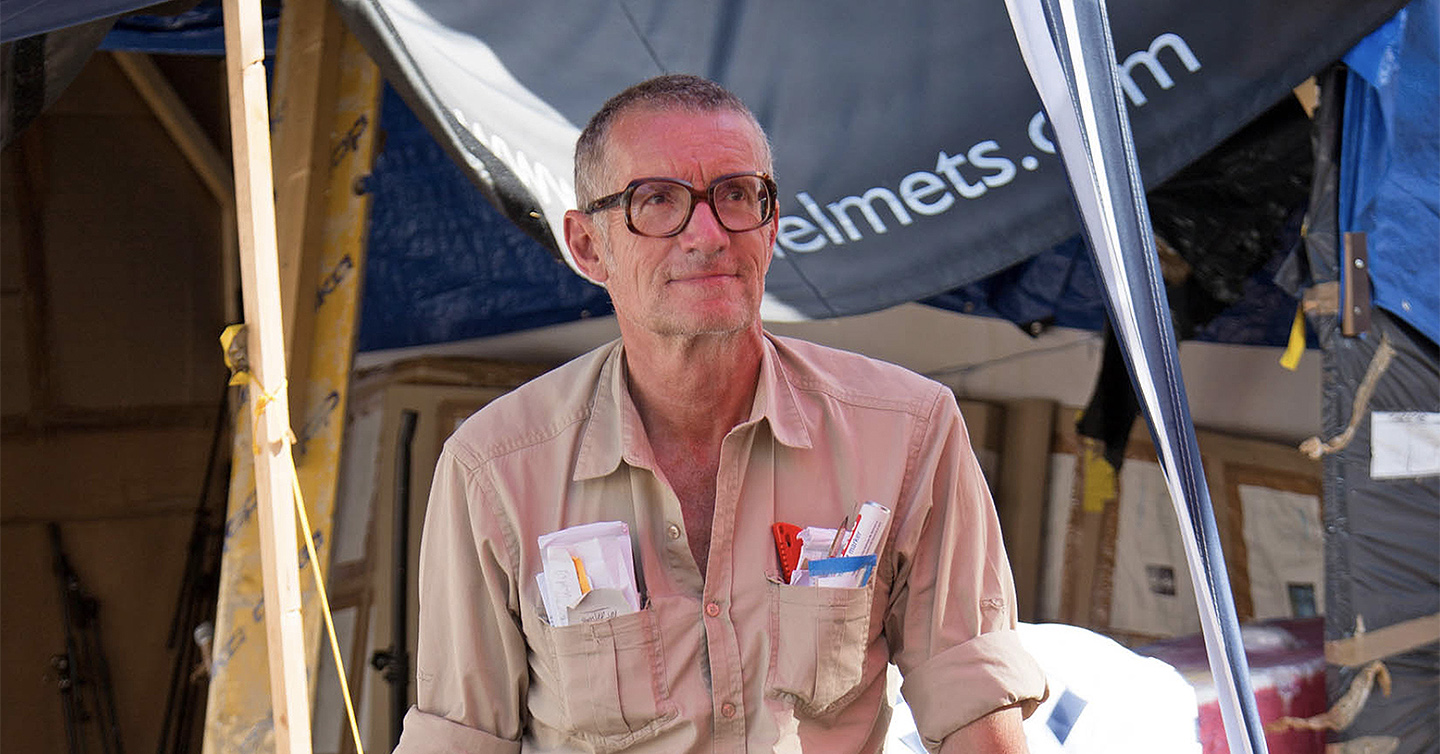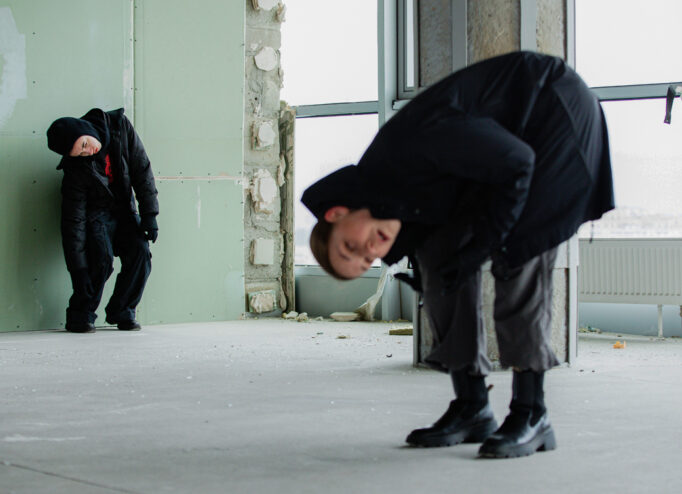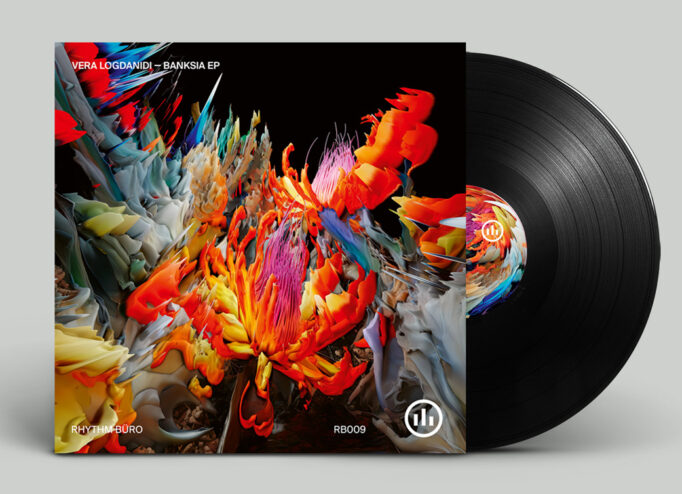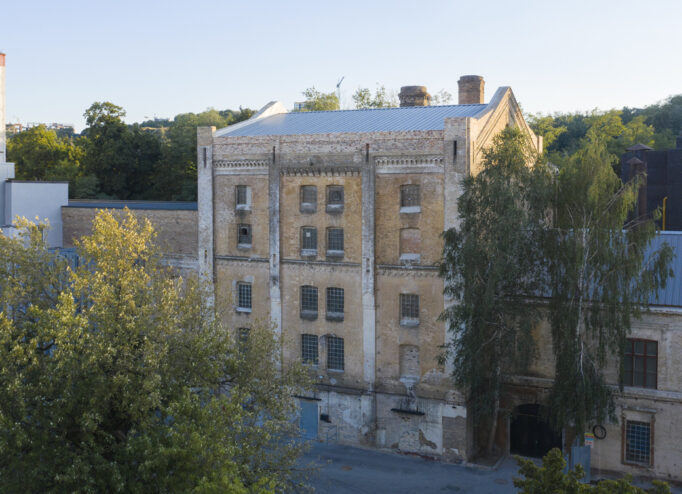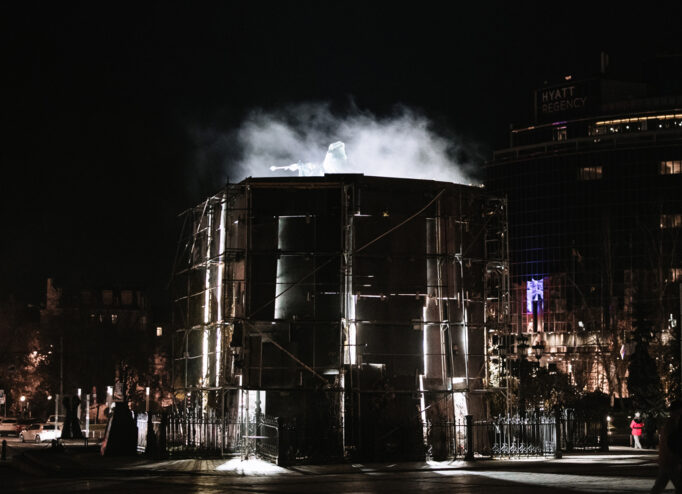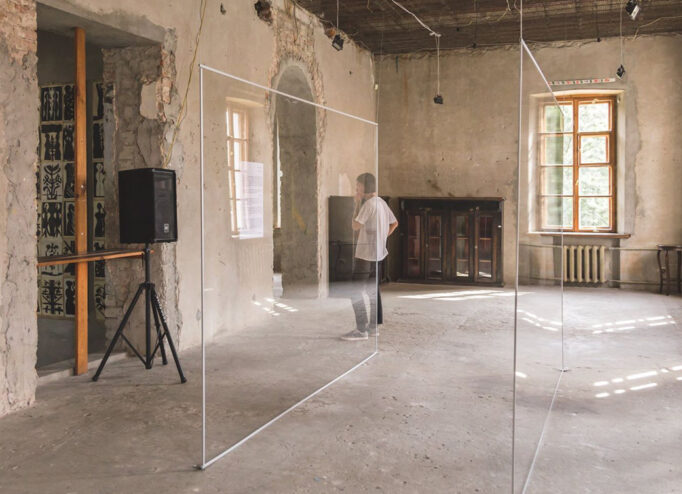The Swiss artist Thomas Hirschhorn works with improvised materials: cardboard, plastic, aluminum foil, photocopies and clippings from magazines, creating political and socially engaged collages, installations and sculptures. He adds quotes by philosophers and his own comments to create a space for the viewer’s reflection.
His works have been presented in many international exhibitions, including the Triennale at the Palais de Tokyo in Paris (2012), the Shanghai Biennale (2012), and twice at the Venice Biennale (1999, 2015).
He also used the collage technique, combining cardboard, felt-tip pens, photos and crystals, in two large posters, Eternal Ruins and There Is Beauty, which can be seen at the contemporary art exhibition at the MOT art space on Kontraktova Square in Kyiv until May 14. “When I received the invitation to take part in an exhibition in Kyiv I chose these two works thinking they could make sense in that particular moment, a deeper sense in the realm of the unfortunate today”, Thomas tells us in an interview.
DTF Magazine spoke with Hirschhorn about the price of the boycott, the difficulty of destruction, and his artistic statements against russian invasion of Ukraine
— As an artist you do not stay out of politics, and from 2003 to 2007 you even refused to exhibit in Switzerland as a protest against Christoph Blocher, until he lost the election. What brought up in you a stable position?
— My boycott was an individual gesture, guided by the will to do a clear gesture, and a gesture that I could ‘control’ myself — not to exhibit in my home country — in order to express my position. In standing that boycott I had to be aware that the first one to pay the price must be myself. And I did, because exhibiting my work is what I love most — therefore also my boycott led to a final success. Because only if you have to pay the price for a boycott there is a chance of success.
— Was it somehow influenced or inspired by Simone Weil, the social activist and philosopher you admire, who gave up sugar at the age of 6 out of solidarity with the military who were on the Western Front at the time? How exactly?
— I love the radicality and singularity of Simone Weil’s work and life. I admire her sharp and uncompromising thinking which is truly encouraging. Her book ‘Gravity and Grace’ is such a revolutionary enlightenment. I love her courage to get in action, her commitment to the ‘lost causes’, her tendency to be on the ‘wrong side’, her thoughts about art, rigor, her being a philosopher, capacity for empathy, her will to always confront the hard-core of reality, belief and engagement. In her short life she established an outstanding, beautiful and powerful philosophy. She is a healer, a hero, an example.
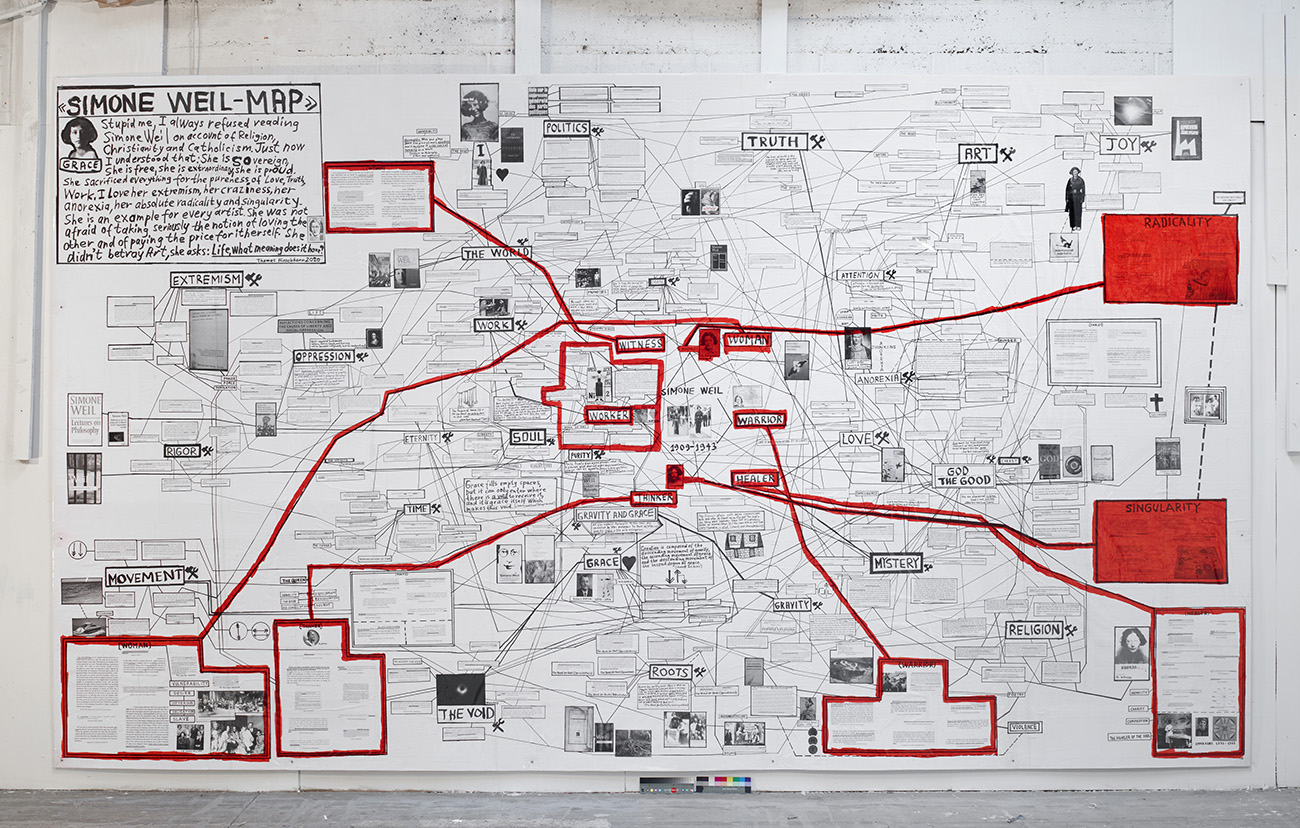
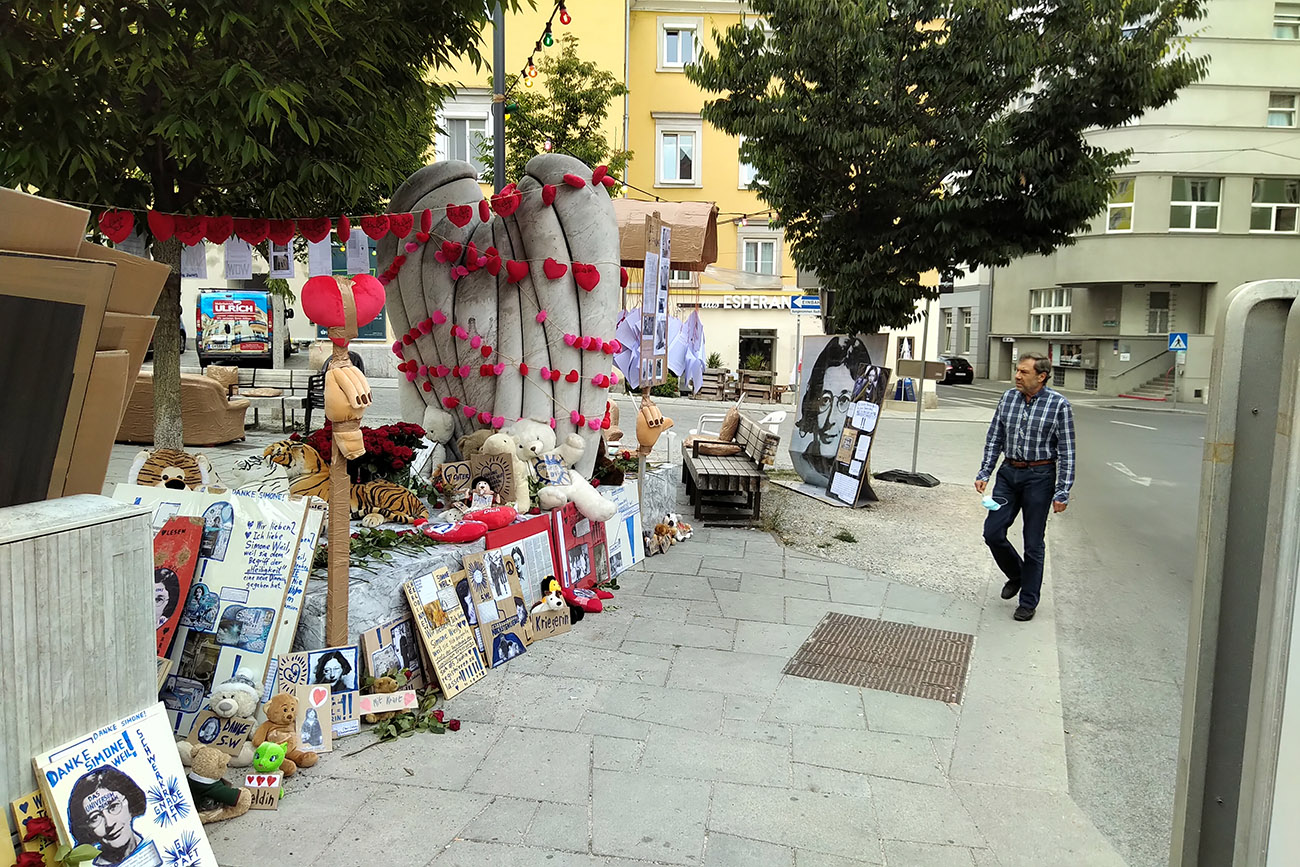
Thomas Hirschhorn,“Simone Weil-Map”, 2020
Thomas Hirschhorn,“Simone Weil-Memorial”, 2021
— You think the term “political artist” is a lazy classification. How would you classify yourself?
— I am an artist — worker — soldier.
— In April 2022 you opened ART=SHELTER, “a shelter for hope, production, dialogue, inclusion, love (of art) and exchange; a shelter for preventing hate, anger, violence, negativity, passivity and resentment”. Why did you choose this particular format and why did it seem most appropriate to you at the time?
— “Art = Shelter” is the work I initiated for ‘Art Station Dubulti’ (art space in the building of the reconstructed railway station in Jurmala, Latvia — Note from DTF Magazine) in order to give an artistic statement against the invasion of Ukraine. “Art = Shelter” is the form I believe in, which means that art is the place for exchange of competences, for sharing an experience, for a non-violent confrontation.
Art is not sheltering from bombs, from shelling, from bullets but art is a shelter from hate, anger, resentment.
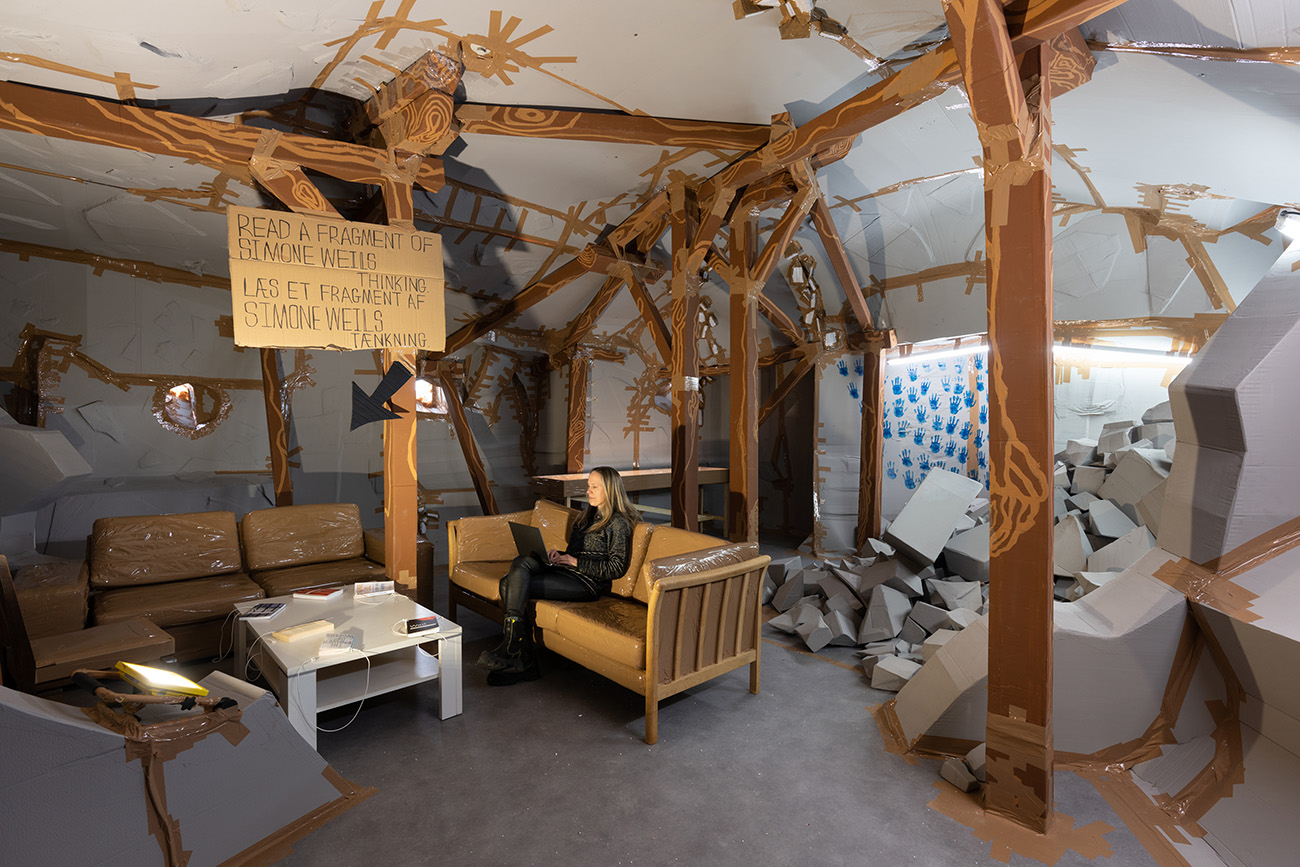
Thomas Hirschhorn, “ART=SHELTER”, 2022
This is the aim of “Art = Shelter” and I am happy that ‘Art Station Dubulti’ did develop and intensify this experience together with young latvian people even after I left Latvia, beginning of May 2022. I thought the format of “Art = Shelter” was appropriate because it was possible with material and with presence to start working and producing very quickly. This “Presence and Production” — project therefore responded to the parameters of a certain urgency. Inga Steimane (curator of Art Station Dubulti — Note from DTF Magazine) invited me mid-March to come to Latvia and 3 weeks later we started to build the work in Jurmala.
— Your work, presented at MOT in Kyiv, combines contrasting in price materials: inexpensive cardboard, markers and paper, and expensive crystals. What did you want to say with it, if at all?
— First, Crystals are not so expensive, considered as ‘half-jewelry’. But crystals are very old and it is the dimension of ‘time’ or ‘out of time’ I wanted to introduce with the crystals in the posters. A crystal — all crystals in the two “Ruin-Posters” are from the Swiss mountains — can be dated between 5 and 15 millions years of age. Crystals have an ‘esoteric’-dimension which takes a form in their strong tetraeder-logic. In combination with the other elements of the poster the crystals insist on the mineral aspect of a ruin, with the pression, the heat, the liquid.
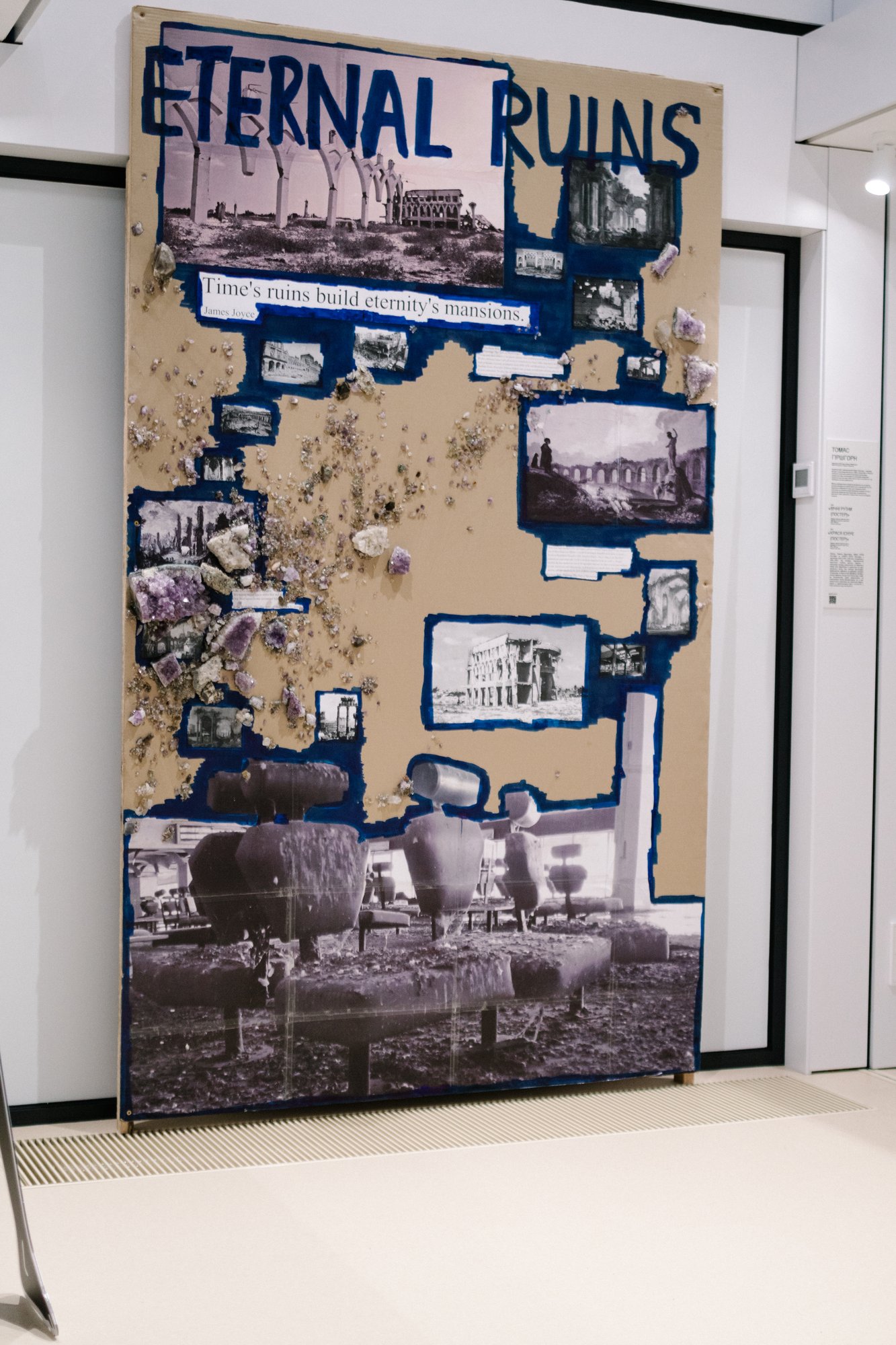
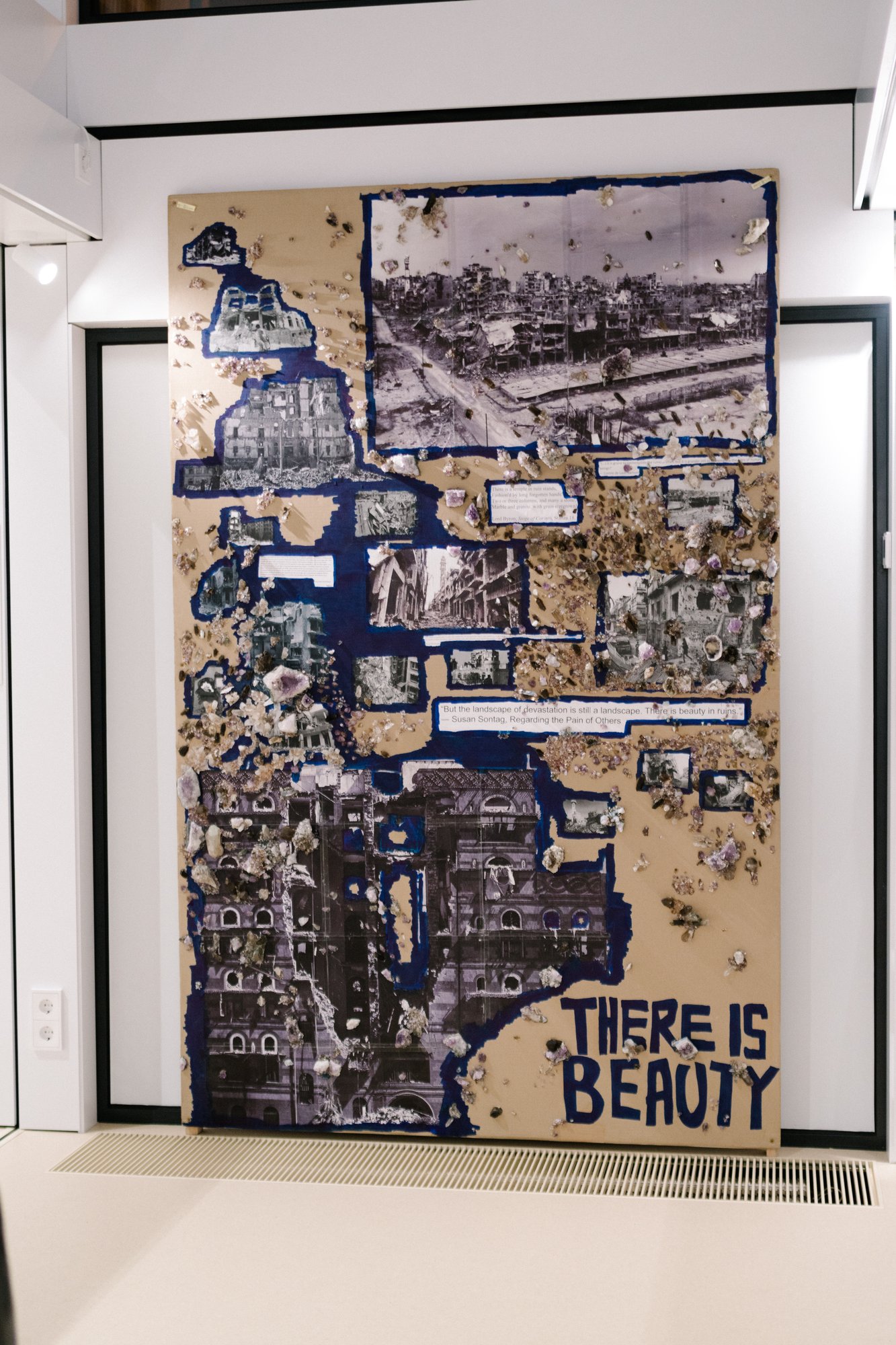
Thomas Hirschhorn’s works ETERNAL RUINS (Poster) and THERE IS BEAUTY (Poster) are part of the “Poster” series of works created between 2016 and 2020. On large vertical cardboard stands, the artist works with techniques such as collage, separation and assemblage, the choice of which is formally a response to the chaos of the modern world. He mixes photographs of ruined landscapes with opinions of great historical figures (James Joyce, Lord Byron, Diderot, Yve-Alain Bois, Comte de Lautreamont), roughly highlighted and written in blue felt pen. Crystals sprout everywhere and they seem to participate in the crystallization of the ruins, embodying the meaning of time and eternity.
— The ruins, shaped like a circle, probably signify the cyclical nature of wars. What kind of reaction did you expect from the Ukrainian public?
— I stand in solidarity with the Ukrainian people and their fight for their land, for freedom and for their self determination. My work is a universal work — in any case it has this pretension. I did not make the works specifically for the Ukrainian public: both “Ruin Poster” in the Kyiv exhibition, “There is Beauty” and “Eternal Ruins” were made in 2020, before the Russian invasion.
It is important to me that my work have — if anything — the power to implicate universally.
When I received the invitation to take part in an exhibition in Kyiv I chose these two works thinking they could make sense in that particular moment, a deeper sense in the realm of the unfortunate today. My work is an affirmation of form, it is not as a comment about the situation in Ukraine, it is a form which interrogates the meaning of a ruin, in the past, today, in the future.
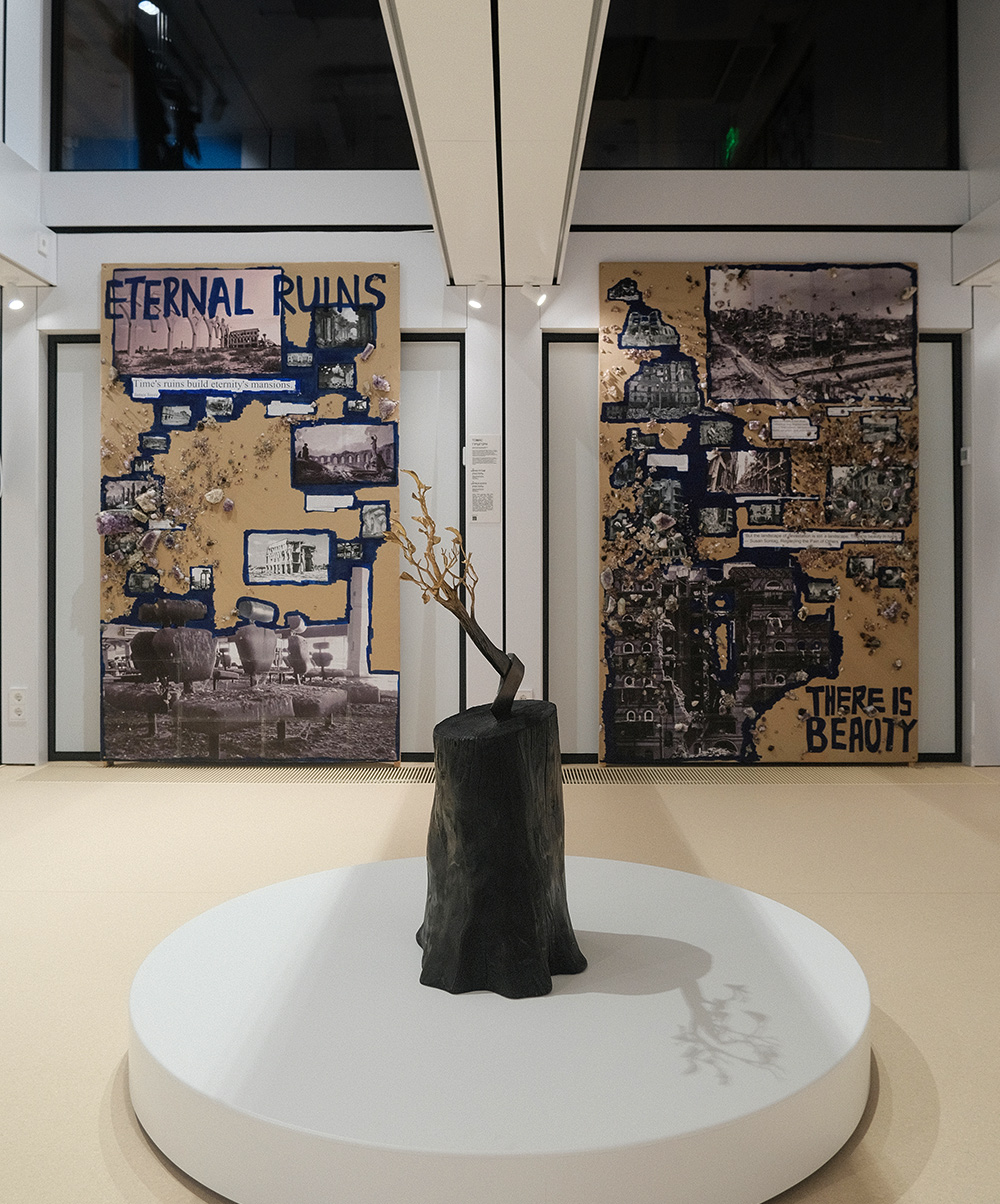
The posters ETERNAL RUINS and THERE IS BEAUTY at the MOT artspace
— How do you usually interact with the audience when you attend an exhibition?
— To me the most precious interaction is the one of implication. Somebody can get touched or involved in a work of art, my work of art, without that I — the artist — having to know. I have confidence in the mystery and grace of art, the most beautiful compliment I can get from somebody facing my work is : I feel implicated!
— Do you prefer to explain the idea or do you watch the audience try to understand the work? Why?
— I think ‘to understand’ is not the goal, myself if I visit an exhibition or if I do an experience of art, I want to be touched, I want to be interrogated, I want to feel implicated. It’s the energy of an artwork I want to get, the energy which comes from the absolute necessity (of the artist) to do a work of art. If I can connect with this energy then I can get transformed: this doesn’t need any explanation.
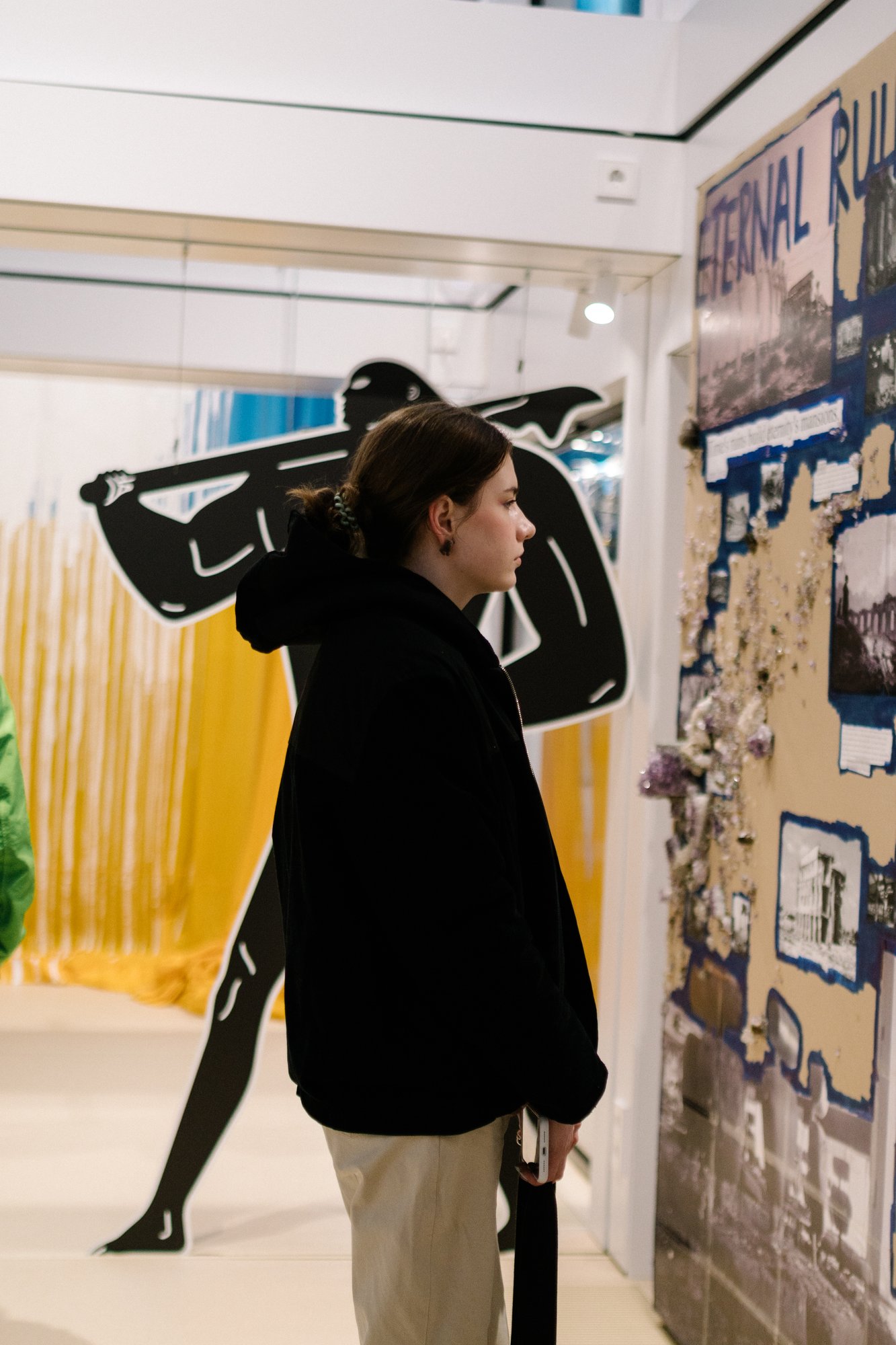
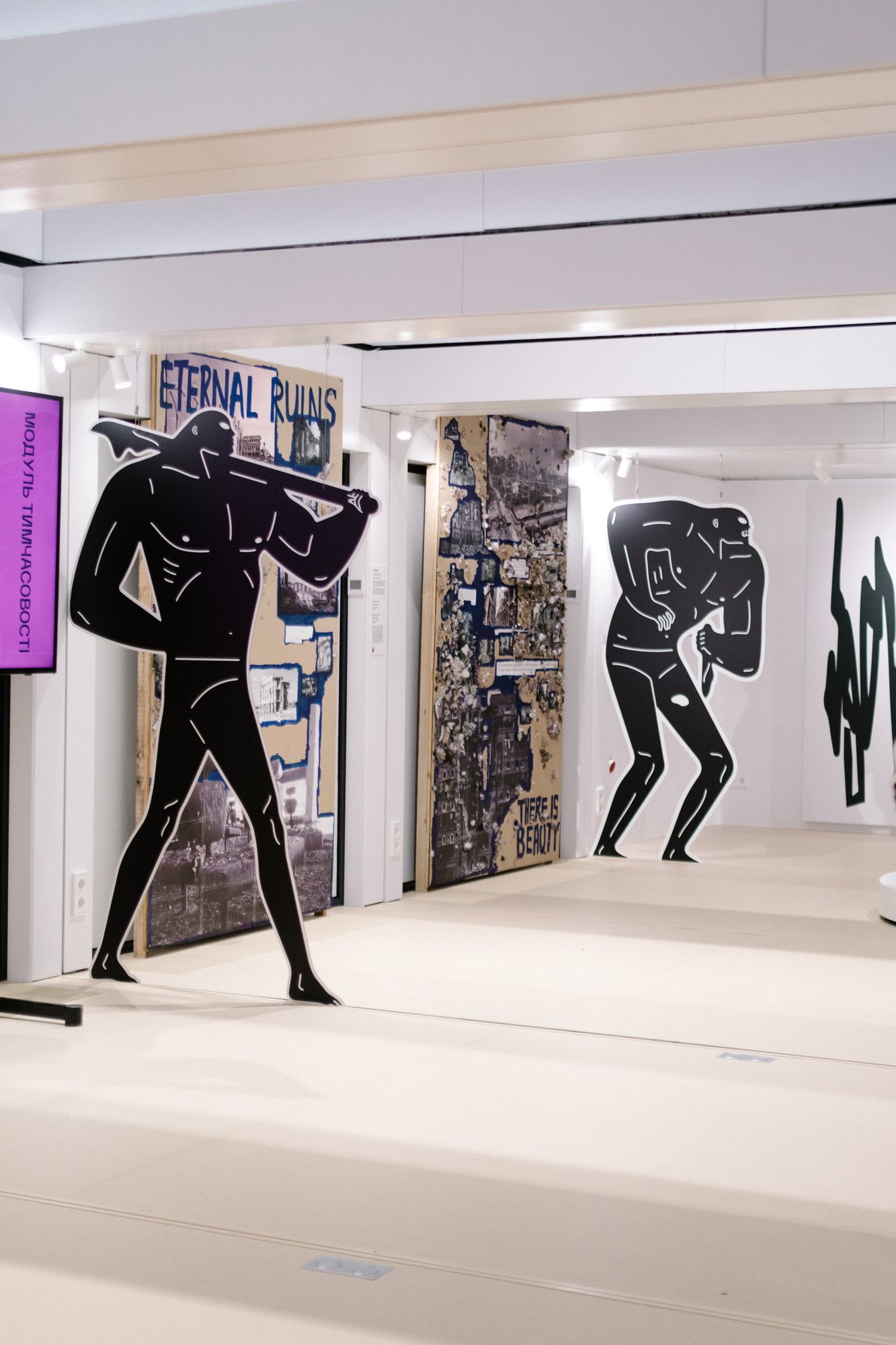
The posters ETERNAL RUINS and THERE IS BEAUTY at the MOT artspace
— You work a lot with environmental themes, like the installation Too Too-Much Much filled with bottles or Crystal of resistance with construction and other waste materials. Do you believe that art can influence people’s consciousness regarding such issues? How exactly?
— I am working with simple, poor, available materials. These materials are everyday, and non-exclusive materials. The materials I work with are materials which do not own a ‘plus-value’ as material, they also are not ‘arty’-materials. The materials I decide to work with are non-intimidating (an important ‘quality’ of the material to me). Therefore my decision to work with these materials is a political decision.
The question of ‘waste’ in art is a ‘tricky’ question — because I am definitely for waste of art, for waste of giving, for waste of thinking, for waste of generosity, for waste of mystery, for waste of spirituality, for waste of adoration, for waste of love.

Thomas Hirschhor ,“Crystal of Resistance”, 2011

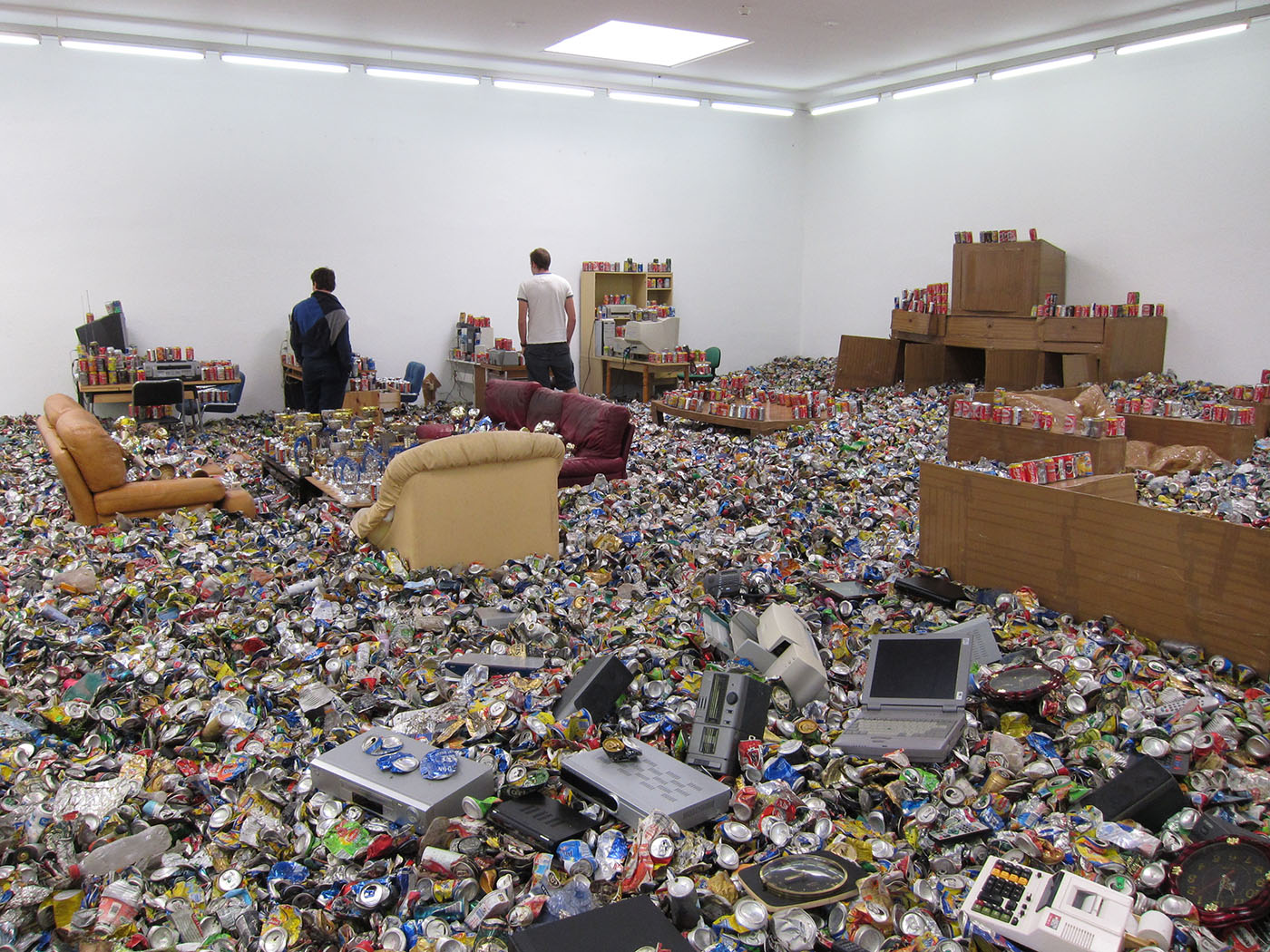
Thomas Hirschhorn,“Too Too-Much Much”, 2010
— You also have a work in which you say that it’s “not okay” that eco-activists doused with paint the protective glass of famous paintings in museums, but it’s okay to douse with paint or something else the administrative buildings. I take it that you are criticizing the attack on art, not eco-activism in general. What do you think ideal activism should be, if it is important to create a newsbreak so that the movement can be noticed and joined by as many people as possible ?
— It is just not possible to destroy art, to attack art, to misuse art, each art, even symbolically. Because it’s art —each art — who heals, it’s art who helps, it’s art who empowers.
As an artist, I do not want to give up the power of art, I do not want to delegate it, I do not want to let journalists or politicians use, misuse, art.
We artists have to fight against it. We need to make clear that art, philosophy and poetry are the real resistance — the only power, the real power — against war, injustice, inequality, discrimination, disaster, violence, and hate.
— If we take Antonio Gramsci’s quote: “Destruction is difficult. It is as difficult as creation”, which you used in In Between, then destructiveness is a complex phenomenon. Or is any destructiveness difficult for you? What if, for example, we look at it in the context of the eco-activists from the previous question?
— With ‘destruction’ Antonio Gramsci means destruction of unjust, hierarchical structures, destruction of unjust tradition based on inequality, and destruction of unjust habits grounded on cultural behavior. Those injustices are difficult to destroy, indeed, and at the same time to create, to invent, to build new structures based on justice, to invent new laws grounded on equality and to create a new behavior based on truth without corruption is difficult. That is how the fantastic and important quote of Antonio Gramsci needs to be understood.
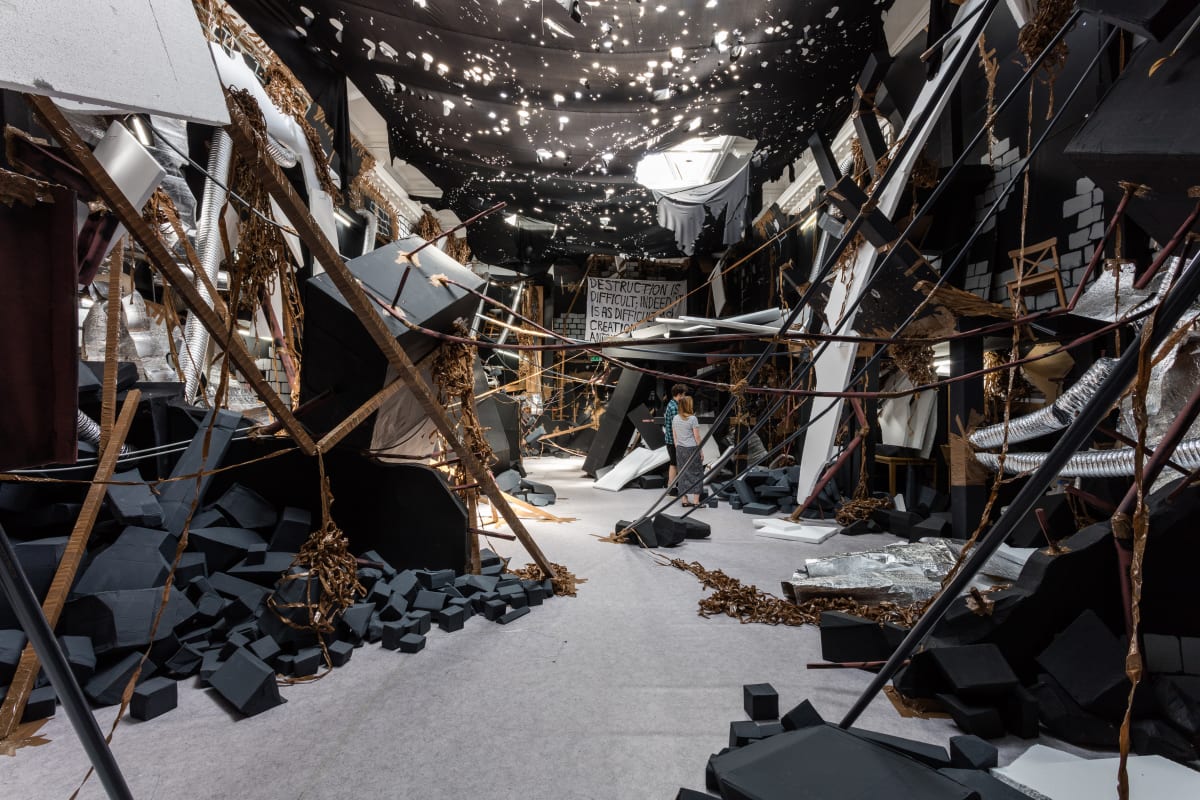
Thomas Hirschhorn, “In Between”, 2014
— Do you believe in non-violent social resistance movements in the context of eco-activism? Or is it a utopia for you?
— Yes, I believe in nonviolent resistance. Because everything grounded on violence will perish by violence.
— The ruins you create, including those in In Between, are systematized and ordered, so you emphasize the existence of “a precarious dimension, the dimension of the non-guaranteed”. What did you mean by that?
— The theme of ‘ruin’ has interested me for years. The many reasons why something falls into ruins is what interests me. It’s the dimension of the fragments which are obvious with a ruin. A ruin reminds us that we are fragments in a fragmented world. It makes us recognize precariousness as a condition of life, of universality, of openness to the other, of acceptance of being a fragment among others.
— Duality of decision is present in some of your works, such as The virtual and the real. How often do you make a decision by writing out the pros and cons of a task?
— I am interested in problems, complexities, chaos, conflicts, unresolved things. I want to work in the chaos, I want to make decisions in the disaster, surrounded by problems and questions, knowing that I will have to pay the price in any case for each of my decisions, for each of my works, for every position I take. I think to make a decision means to give form : to give form is essential.
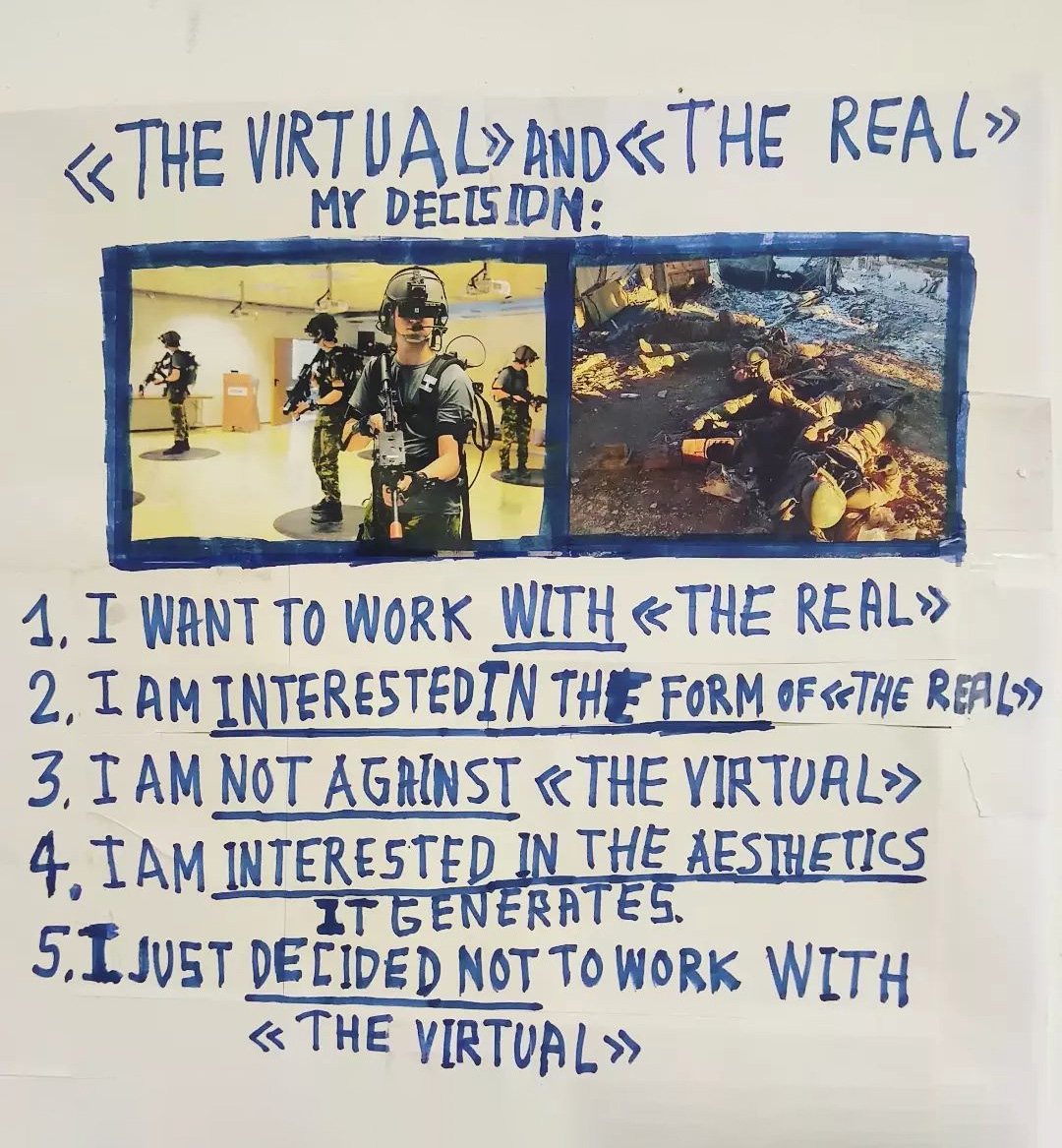
Thomas Hirschhorn, “The virtual and the real”, 2023
— And how often do you make lists?
— For sure too much ! To make lists is not such an original or as such an interesting gesture but it helped me for example when I started — a long time ago — to fix on a list all the artists I really love.
Thomas Hirschhorn’s works There Is Beauty and Eternal Ruins can be seen in Kyiv at the exhibition of contemporary art at the MOT space from February 17 to May 14. The theme of the exhibition is devoted to the concept of Temporality.
